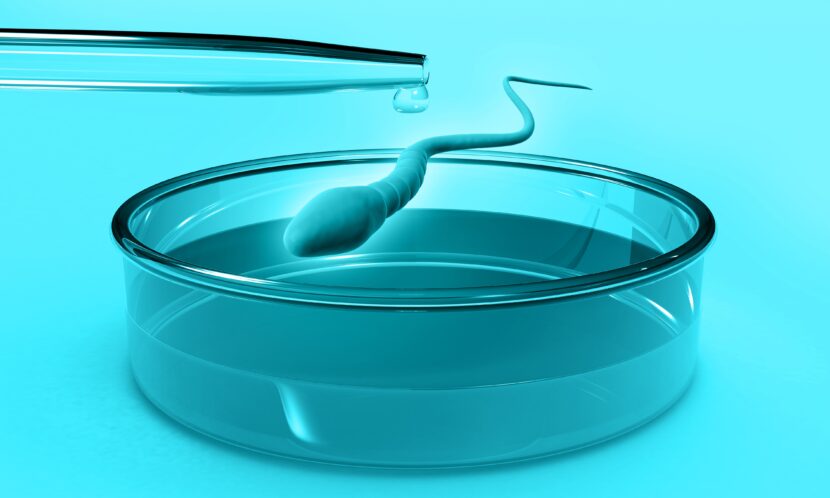Cancer can affect your fertility. If you are undergoing cancer treatment, you may want to consider fertility preservation. It can help you to become pregnant in the future.
This article will help you understand how cancer can affect your fertility, what fertility preservation options are available, and the risks involved.
What is fertility preservation?
Fertility preservation refers to saving and preserving embryos, eggs, sperm, and reproductive tissues. It makes it possible for you to have a child in the future.
Fertility preservation is common among individuals whose fertility is affected due to medical conditions or diseases or who want to postpone having children for personal reasons.
How does cancer treatment affect fertility?
Certain cancer treatments can put your fertility at risk. According to one study, cancer treatments such as chemotherapy, radiation, and surgery can increase the chances of infertility by 30-75% and 40-80% in men and women of reproductive age.
The likelihood of cancer treatment affecting your fertility depends on:
- The type and stage of cancer
- The type of cancer treatment
- Your age at the time of treatment
Cancer treatments and their outcomes might include:
1. Surgery:
In some cases, removing the ovary (or ovaries), uterus, Fallopian tubes, testicles, or prostate is the best treatment for people with cancers of the reproductive system. This procedure makes it difficult or impossible to get pregnant or impregnate a partner.
2. Chemotherapy:
Chemotherapy uses drugs like cytostatics and cytotoxins to kill cancer cells. But since the medication is usually administered throughout the body via the bloodstream, it can also attack other cells. However, the effects depend on the drug and the dose.
Younger women who receive chemotherapy are less likely than older women to become infertile.
3. Radiation therapy:
Radiation therapy involves directing high-energy rays at cancer cells to kill them. However, by extension, this treatment can harm body parts not affected by cancer. They can destroy some or all a woman’s egg cells and cause scarring in her uterus, fallopian tubes, cervix, or other reproductive organs. In men, radiation therapy can even slow or stop sperm cell production.
How can women preserve fertility before cancer treatment?
When it comes to fertility preservation, women undergoing cancer treatment have several options.
1. Embryo cryopreservation
During embryo cryopreservation, the eggs are retrieved and fertilised with partner or donor sperm. Following that, the fertilised eggs are allowed to develop for 3-5 days while being monitored by an embryologist. Finally, healthy, viable embryos are vitrified and kept at the same -196 degree Celsius temperature to prevent biological activity.
2. Egg freezing (oocyte cryopreservation)
During egg freezing, the ovaries are stimulated with hormone medication, causing them to produce multiple eggs in a single menstrual cycle. After 8-11 days of closely monitored ovarian stimulation, the eggs are retrieved using a thin needle inserted directly into the ovaries while the patient is under sedation. The eggs are frozen and stored in liquid nitrogen at -196 degree Celsius.
3. Ovarian tissue freezing
In this procedure, a whole or partial ovary containing immature eggs is removed and frozen. Later, the ovarian tissue can be re-implanted, or the eggs can be retrieved and matured in a laboratory.
This experimental procedure offers a fertility preservation option for prepubescent girls with cancer who can’t undergo egg freezing.
4. Ovarian transposition (oophoropexy)
This procedure can help protect your ovaries from the effects of radiation therapy. During this procedure, the surgeon separates your ovaries from the uterus and attaches them to your abdominal wall, away from the treatment area.
Ovaries, however, are not always protected due to scattering radiation.
5. Radiation shielding
This fertility preservation technique involves a small lead shield that protects the ovaries from radiation exposure they receive during radiation therapy.
What can men do to preserve fertility before cancer treatment?
Men can also preserve their fertility before undergoing cancer treatment by using fertility preservation techniques such as:
1. Sperm cryopreservation
This procedure includes freezing and storing sperm in a fertility clinic or sperm bank for future use. The samples are frozen and can be preserved for years.
It is advised that a man freeze multiple samples to ensure a good chance of pregnancy in future.
2. Radiation shielding
Small lead shields protect the testicles from radiation exposure during this procedure.
3. Testicular tissue freezing
In this procedure, some sperm-producing tissue is surgically removed and frozen. It’s experimental, like ovarian tissue freezing, but it’s the only fertility preservation option for prepubescent boys.
What are the risks of fertility preservation?
Fertility preservation procedures have some risks:
- Some procedures used by providers to collect eggs and sperm can cause bleeding or infection.
- In vitro fertilization may increase the risk of multiple births, premature delivery, low birth weight, miscarriage and ectopic pregnancy.
- Laparoscopic procedures can lead to infection, bleeding, and injury to nearby organs and tissues.
- Ovarian stimulation can increase oestrogen levels. It can increase your risk of blood clots and oestrogen-dependent cancers.
Cancer can affect your fertility. Thanks to modern technology, you can preserve your fertility for a pregnancy in the future.
Consult a doctor if you have questions about fertility preservation.
